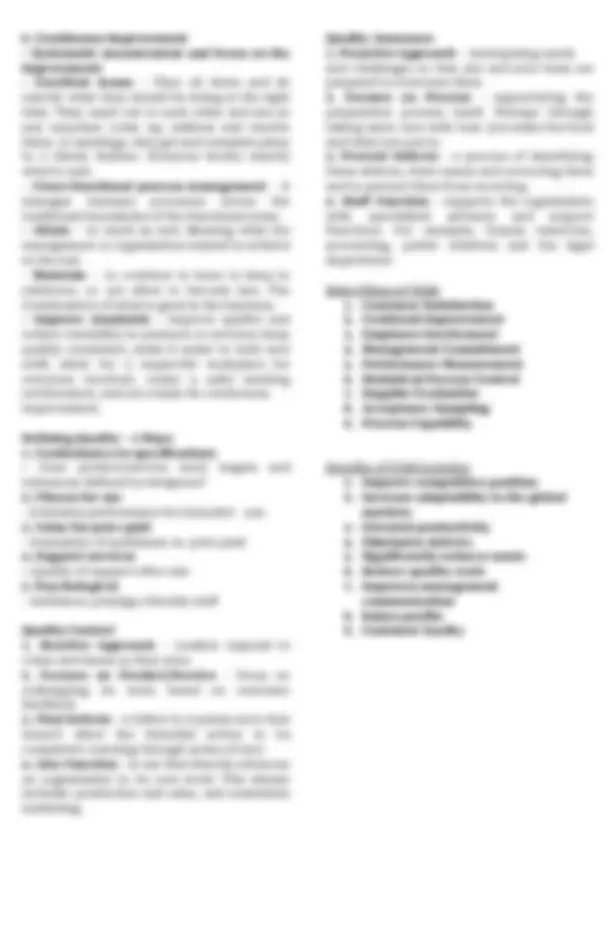Introduction and Implementation of
Operations Management with Total Quality
Management (TQM)
Total Quality Management
- Total Quality Management is a management
approach that originated in the 1950's and has
steadily become more popular since the early
1980's.
- Total Quality is a description of the culture,
attitude and organization of a company that
strives to provide customers with products and
services that satisfy their needs.
- TQM, is a method by which management and
employees can become involved in the
continuous improvement of the production of
goods and services.
- It is a combination of quality and
management tools aimed at increasing
business and reducing losses due to wasteful
practices.
- TQM is a management philosophy that seeks
to integrate all organizational functions
(marketing, nance, design, engineering, and
production, customer service, etc.) to focus on
meeting customer needs and organizational
objectives.
TQM is for the most part common sense.
Analyzing three words (TQM), we have:
1. Total
- Made up of the whole
2. Quality
- Degree of excellence a product or service
provides
3. Management
- Act, art, or manner of handling,
controlling, directing, etc.
The relevance and meaning of the three
words in its title.:
Total - The responsibility for achieving Quality
rests with everyone in a business no matter
what their function. It recognizes the necessity
to develop processes across the business, that
together lead to the reliable delivery of exact,
agreed customer requirements. This will
achieve the most competitive cost position and
a higher return on investment.
Quality - The prime task of any business is to
understand the needs of the customer, then
deliver the product or service at the agreed
time, place and price, on every occasion. This
will retain current customers, assist in
acquiring new ones and lead to a subsequent
increase in market share.
Management - Top management leads the
drive to achieve quality for customers, by
communicating the business vision and values
to all employees; ensuring the right business
processes are in place; introducing and
maintaining a continuous improvement
culture.
Goal of TQM and its Purpose
All managers leading and facilitating all
contributors in everyone’s two main objectives:
1. Total customer satisfaction
2. Continuous improvement
- The goal is to involve all levels and functions
of an organization in continually meeting and
exceeding the customer's expectations of their
daily operations, products or services.
- A customer-focused process that focuses on
consistently improving business operations
management. It strives to ensure all associated
employees work toward the common goals of
improving product or service quality, as well as
improving the procedures that are in place for
production.
The key principles of TQM are as following:
1. Management Commitment
- Plan (drive, direct)
- Do (deploy, support, participate)
- Check (review)
- Act (recognize, communicate, revise)
2. Employee Empowerment
- Training
- Suggestion scheme
- Measurement and recognition
- Excellence teams
3. Customer Focus
- Supplier partnership
- Service relationship with internal customers
- Never compromise quality
- Customer driven standards
4. Survival of any organization is dependent
on customers.
5. Customer Satisfaction- The end goal
A. External Customers - a person who is not
directly connected to your organization other
than by purchasing your product or service.
Classied: Individual consumers, Businesses
and Other Organizations.
B. Internal Customers - people within your
organization who receive goods or services
from another part of your business. They are
stakeholders who might be employees,
subcontractors, partner businesses or
individuals or – by some denitions –
suppliers.










